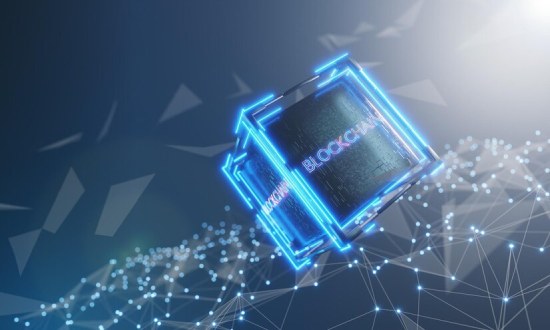Ownership that travels
Assets and credentials move across apps without platform lock-in.
Learn fundamentals, architecture, use cases, standards, risks, and tooling.

It is an internet paradigm built on blockchains and open protocols. It shifts control from platforms to users. Analysts describe it as a decentralized technology stack. It enables user-controlled identity, data, and assets across applications.
Think of it as “read-write-own.” Users own keys, assets, and permissions rather than accounts on a single platform. Blockchains provide a shared, tamper-evident state for applications. Smart contracts encode rules and automate outcomes. Wallets act as user agents. They authorize actions with keys and policies, including recovery and sponsorship in modern models. Web3 differs from the W3C “Semantic Web” idea. The Semantic Web focuses on linked, machine-readable data and vocabularies. Enterprise viewpoints stress value and constraints.
Leaders weigh ownership benefits against UX, security, and regulatory needs. IBM highlights the role of off-chain data and oracles. These services expand what on-chain logic can safely automate. McKinsey frames the concept as community-run networks. They replace today’s centralized control with verifiable coordination.
Many participants secure and update shared state.
Smart contracts enforce rules without intermediaries.
Keys, credentials, and assets stay with users.
Open interfaces allow modules to combine and evolve.
Shared state: A ledger that multiple parties can trust and verify.
Execution: Contract logic that runs deterministically on that state.
Identity: Wallets and verifiable credentials that travel across apps.
Bridges to reality: Oracles and data services that feed external facts.
Not a token price narrative. It is an architectural shift.
Not “Web 3.0” in the Semantic Web sense. That is a different goal.
Not a single chain or vendor platform. It spans many networks.
Treat it as shared, verifiable infrastructure. Design for user agency, interoperability, and governed change.
It changes how organizations share data, move value, and enforce rules. It introduces shared, verifiable state across firm and market boundaries. Gartner frames it as a decentralized stack that returns control of identity and data to users.
Executives care because shared rails can lower coordination cost and reduce reconciliation work. Institutions now test tokenization, programmable settlement, and cross-border workflows at scale. Singapore’s Project Guardian coordinates multi-bank pilots, while Hong Kong issues tokenised bonds to production.
Analysts expect real value formation, not just narratives. McKinsey projects tokenized financial assets could reach about $2T by 2030, excluding crypto and stablecoins. Central banks also explore “unified ledger” platforms that combine money and assets on programmable infrastructure.
Assets and credentials move across apps without platform lock-in.
Contracts handle payouts, redemptions, and access checks with audit trails.
Everyone reads the same ledger, which cuts reconciliation loops.
Encode policies as tests and rules. Surface exceptions fast.
Reuse open modules instead of rebuilding primitives.
It replaces intermediaries with verifiable code and shared infrastructure, ensuring ownership and automation without centralized control.
Web3 runs on blockchains, which serve as shared ledgers verified by many participants. Instead of relying on a central server, everyone can check and confirm the same state.
Smart contracts sit on these blockchains and act like automated rules. They move assets, enforce agreements, and run processes without intermediaries. Users interact with them through wallets, which store cryptographic keys and sign transactions.
To scale, Web3 uses Layer 2 rollups, which bundle transactions before posting proofs to the main chain. Oracles feed contracts with real-world data, and decentralized storage handles large files off-chain.
Web3 relies on a set of building blocks that work together to deliver decentralization, automation, and user ownership.
Form the backbone. They provide consensus, record transactions, and ensure everyone sees the same verified state.
run on these blockchains. They act as self-executing programs that enforce rules and automate processes without intermediaries.
Connect users to applications. Wallets hold keys, sign transactions, and manage assets. Newer smart accounts add features like recovery, spending limits, and sponsored fees.
Such as rollups batch many transactions and post proofs on a base chain. This reduces costs and increases throughput while keeping security intact.
Bring external information, like prices, weather, or settlement data, onto the blockchain so contracts can respond to real-world events.
Networks like IPFS or Arweave keep large files and metadata accessible outside the blockchain while maintaining verifiability.
Structure raw blockchain data into easy-to-use APIs, powering dashboards, analytics, and user interfaces.
Essentially, blockchains secure the system, contracts automate it, wallets provide access, and supporting layers make it scalable and useful.
Web3 applications move beyond payments and speculation. They use shared state, smart contracts, and decentralized tools to solve real problems.
Stablecoins and tokenized assets enable faster settlement, lower costs, and cross-border transfers without intermediaries.
Shared ledgers track goods from source to shelf, improving transparency, recall speed, and auditability.
Decentralized identifiers (DIDs) and verifiable credentials let users prove who they are without handing over sensitive data repeatedly.
Players own items as tokens and trade them across marketplaces, reducing lock-in to a single platform.
On-chain ownership ensures royalties, transparent revenue sharing, and access control for digital content.
Decentralized infrastructure networks reward contributors who provide connectivity, compute, or location data.
Registries and carbon credits recorded on-chain increase accountability and reduce double counting.
Governments explore tokenized bonds, registries, and grants to improve efficiency and reporting.
Web3 enables ownership, automation, and interoperability across industries, creating new models for how value and trust are managed online.
Web3 networks trade off speed, fees, and settlement certainty. These three factors define how practical an application feels.
Blockchains measure throughput in transactions per second. Layer 1s stay limited for security, while rollups batch transactions to scale.
Every action carries a gas fee. Prices rise with demand, but rollups and data layers cut costs by spreading them across batches.
Time from submission to confirmation varies by design. Some finalize in seconds, others in minutes.
The point where a transaction cannot be reversed. Proof-of-stake chains and rollups offer different guarantees.
No network optimizes all three. Design choices balance security, efficiency, and user experience.
The web has evolved through clear phases, each shifting how people interact online.
Static pages, limited interaction, and read-only access. Companies published content; users consumed it.
Platforms like social media enabled read–write access. Users create content, but platforms own the data.
Adds ownership. Users control assets, identities, and permissions on decentralized networks. It is often described as read–write–own.
The term Web3 was coined in 2014 by Gavin Wood, co-founder of Ethereum, to describe a trust-minimized, peer-to-peer internet. Around the same time, the W3C promoted the separate “Web 3.0” Semantic Web, focused on machine-readable data and linked vocabularies.
Real-world pilots show how Web3 moves from theory to measurable outcomes.
Hong Kong issued tokenized green bonds with T+1 settlement, improving speed and transparency.
The European Investment Bank tested digital bonds on Ethereum, showcasing programmable lifecycle events.
Siemens launched a €60 million digital bond under Germany’s eWpG law, cutting paperwork and intermediaries.
Banks like J.P. Morgan piloted tokenized deposits, reducing reconciliation in cross-border settlements.
Visa expanded stablecoin pilots for merchant settlement, reporting faster cycles and simpler treasury operations.
Case studies prove Web3 can shorten settlement cycles, reduce operational drag, and improve transparency when deployed under clear rules.
Common questions and answers about web3, their implementation, and practical considerations for businesses and developers.

By using this site, you allow our use of cookies. For more information on the cookies we use and how to delete or block them, please read our cookie notice.
We would love to
hear from you!


Innovate with confidence!


